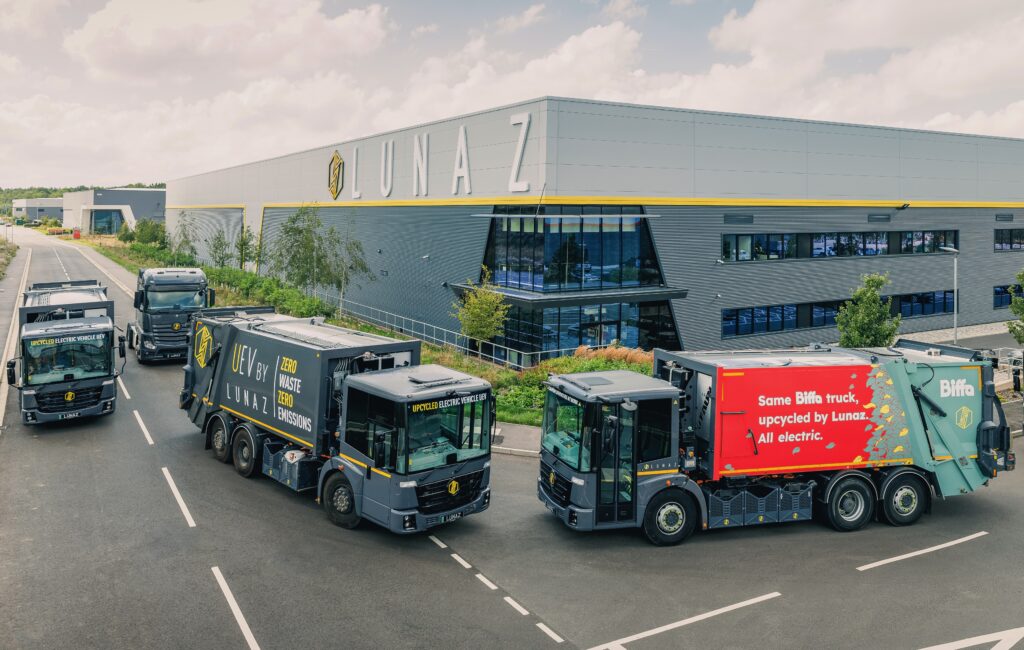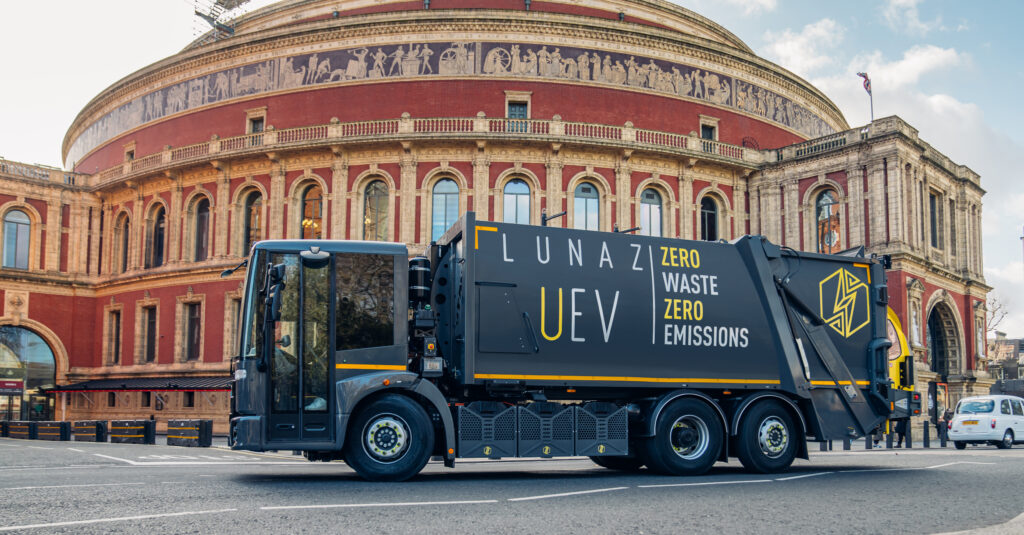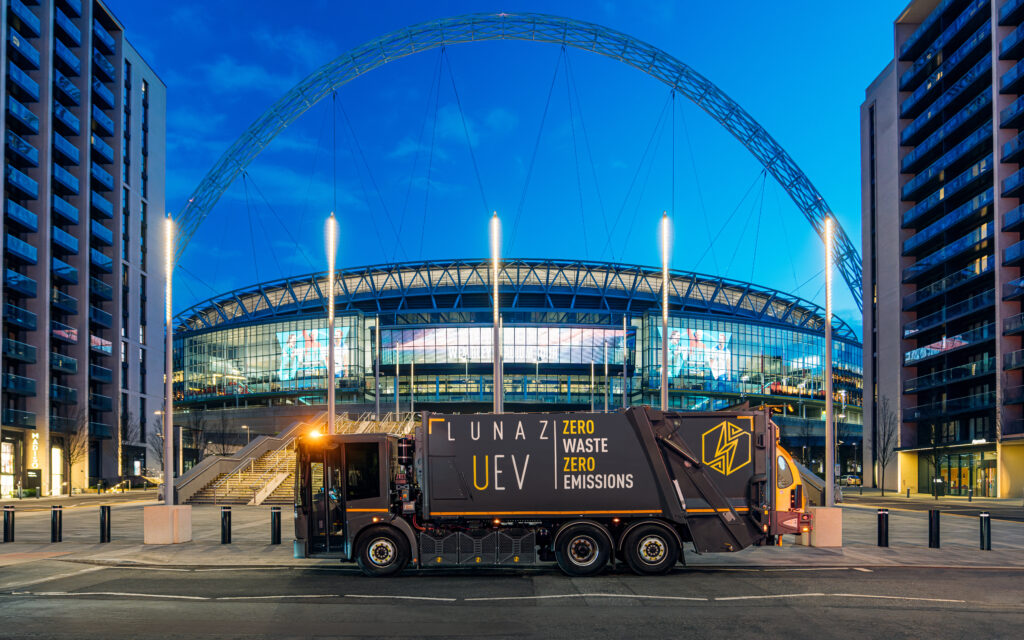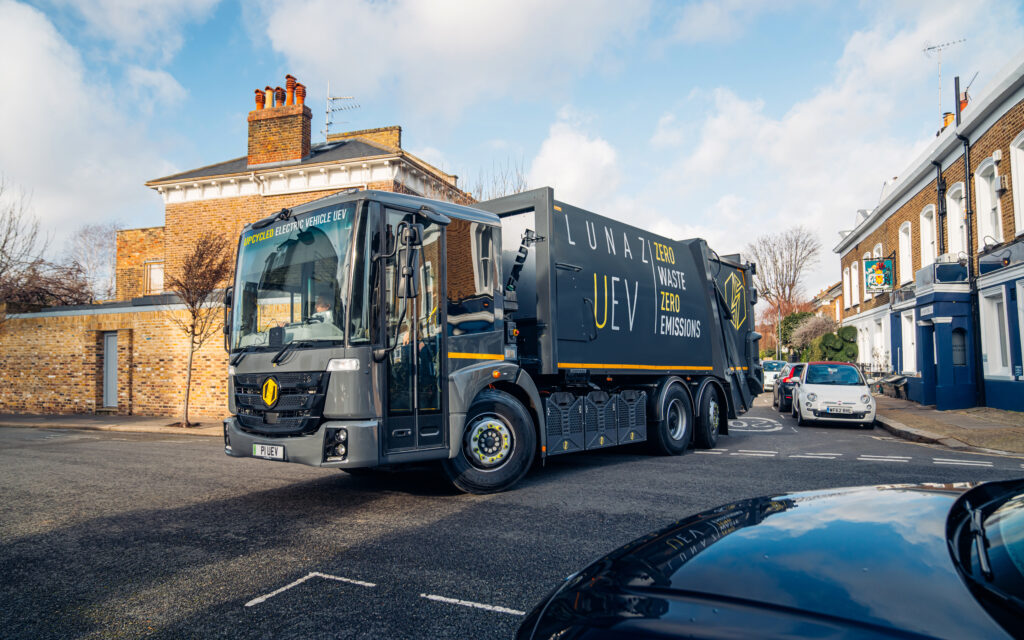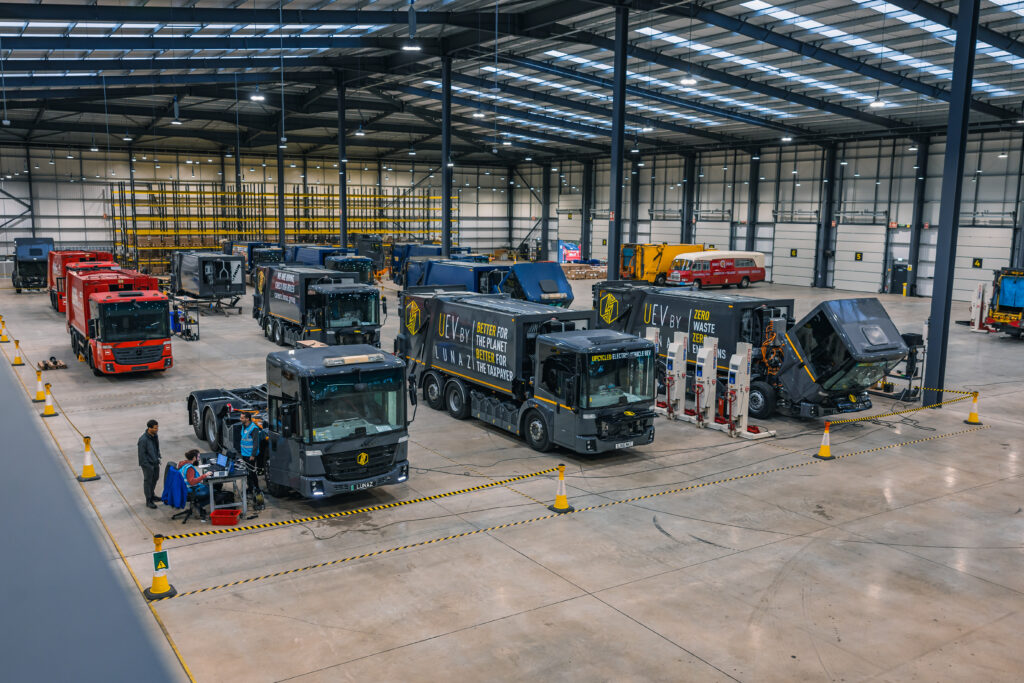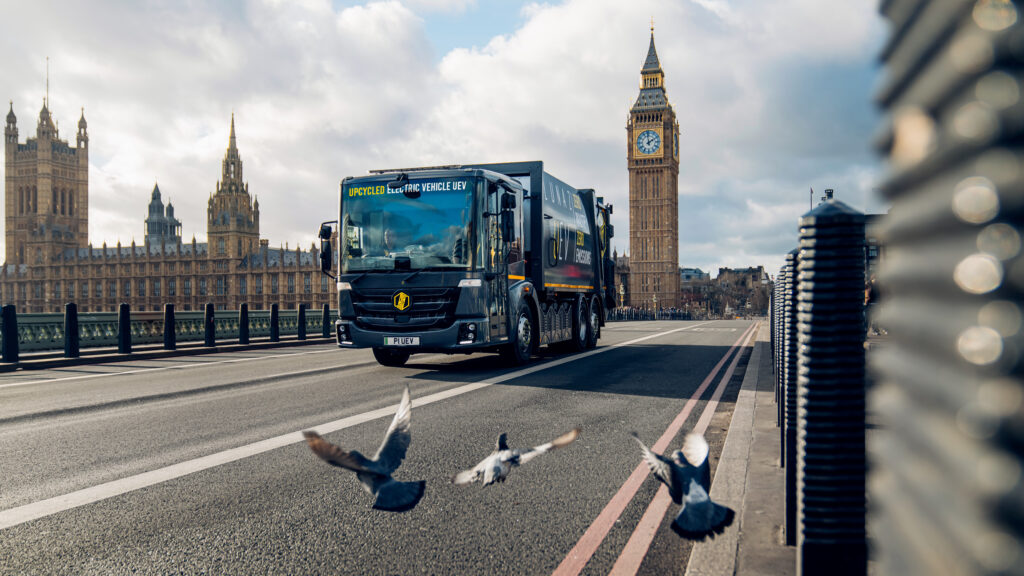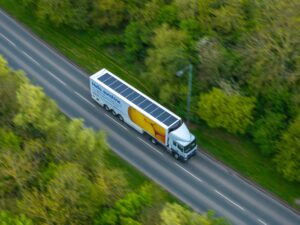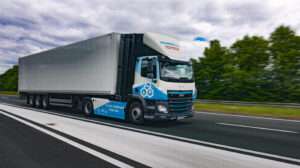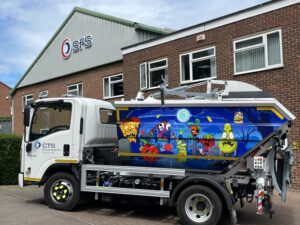Lunaz begins 2024 in a position to continue its journey towards producing 1,100 upcycled electric vehicles (UEVs) a year, with confirmation that its upcycled refuse trucks achieve the highest five-star Direct Vision Standard (DVS) rating for driver visibility.
The DVS has been developed by researchers, academics and representatives from the freight industry, Europe’s leading HGV manufacturers and regulatory bodies. Vehicles are rated from zero stars (poor) up to five stars (excellent).
The DVS five-star rating for Lunaz UEVs is significant because, under Transport for London (TfL) rules, HGV operators can apply for a permit without providing any additional evidence. However, starting 28 October 2024, HGVs rated zero to two stars must be retro-fitted with a Progressive Safe System.
The five-star rating clears the way for Lunaz UEVs to enter service in London without requiring further documents or modifications.
Safety in focus
As an upcycled electric vehicle, each Lunaz refuse truck is equipped with a suite of technologies to help drivers see around the vehicle from all angles.
The external camera monitoring system comprises two assemblies containing three cameras mounted on the top corners of the vehicle, which send images to screens on the dashboard display. The original wing mirrors are replaced with digitised versions that eliminate rear and blind spots around the UEV.
Unlike standard mirrors, these mirrors operate under all conditions, including rain, snow and total darkness, dramatically increasing visibility and safety. The driver can also see what’s directly in front of and below the vehicle via a dedicated downward-facing camera.
In addition to the cameras and mirrors, an object detection system instantly identifies cyclists, pedestrians and other potential hazards, alerting the driver via the dashboard display screen.
Looking ahead
The green light for service in London is another significant step towards local authorities’ broader adoption of Lunaz UEVs as replacements for their end-of-life diesel refuse trucks.
By reusing and recycling existing vehicles, Lunaz seeks to break the destructive replace-with-new cycle, preventing unnecessary landfill and minimising the overall lifetime environmental impact of operating commercial vehicle fleets. A Lunaz UEV is cleaner and better equipped than an all-new electric equivalent, while the restoration and conversion process captures more than 80% of its embedded carbon.
Better for the taxpayer
It can also save 25% of its lifetime capital over its as-new equivalent, providing greater value for local authorities, business operators, and taxpayers. Indeed, over a normal seven-year life-cycle, a Lunaz UEV matches a polluting diesel refuse truck for ‘Total Cost of Ownership’ (TCO), meaning Local Authorities and private operators can make the transition to zero emissions vehicles without pressurising existing budgets.
Lunaz has developed commercial vehicle upcycling and electrification, a sector predicted to grow tenfold over the next five years, driven by the global transition to net zero and clean-air mobility. Lunaz itself expects to employ 350 staff by the end of 2024 – up from just five when it was founded in 2018 – to achieve its stated long-term goal of producing 1,100 vehicles per year.
